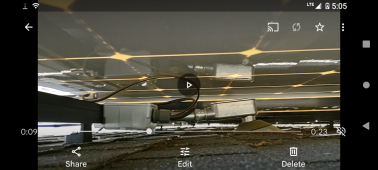Kuma
New Member
Installing 2 string arrays to grid tied SMA inverter and want to confirm how ground wire from PV rails to inverter is wired. Going to use EMT J boxes at each string and join them with a J box, roof penetration, then to SMA Inverter. Is a bus bar added to the J box, ground wire from rail to bus bar, then another ground wire from bus bar to inverter ground connection? Also an instructional video showed a 6awg ground wire from rail to bus bar then 12awg to inverter.
Its a little confusing because a neighbor had a professionally installed PV and they used a PVC J box then EMT conduit to the inverter. I realize PVC can be used but I prefer EMT.
Its a little confusing because a neighbor had a professionally installed PV and they used a PVC J box then EMT conduit to the inverter. I realize PVC can be used but I prefer EMT.





